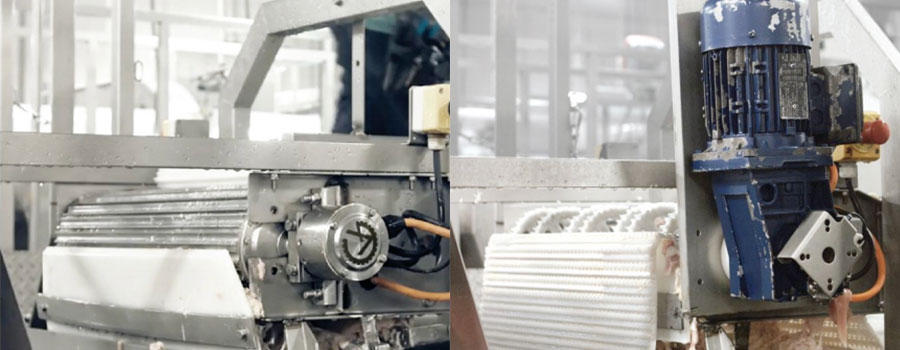
FSMA prompts changes in belt conveyors
The typical square shaft/sprocket drive arrangement powering the belt presents a challenge for the cleaning process. The empty spaces between sprockets provide hiding areas for food and byproducts to be trapped, making the cleaning process more difficult. Removing this byproduct between the sprocket's square bore and shaft is even more difficult, and this area can become a harborage for bacteria. Proper sanitation requires removing the belt.
In response to industry demands and FSMA regulations, food-processing plants have shifted away from fabric materials to more hygienic high-density plastics, nylons and polyethylenes. Modular style belting, and most recently, extruded monolithic-style belts are commonly specified to prevent harboring bacteria. However, traditional square shafts still drive these belts with polymer sprockets mounted along the axis; a key concern in hazard analysis and risk-based preventative controls.
The ideal solution for a completely sanitary conveyor drive is the continuous, all-316-stainless-steel profile design drum motor manufactured by Van der Graaf (Booth E-8032, W-413) Shelby Township, Michigan. The drum motor design encloses the motor, gearbox and all moving external components of a conventional drive inside the drum and bathes everything in food-grade oil. Having no moving components outside the conveyor frame improves safety and hygienics and reduces resources and equipment washdown time.
read the full article (external site)
View original article